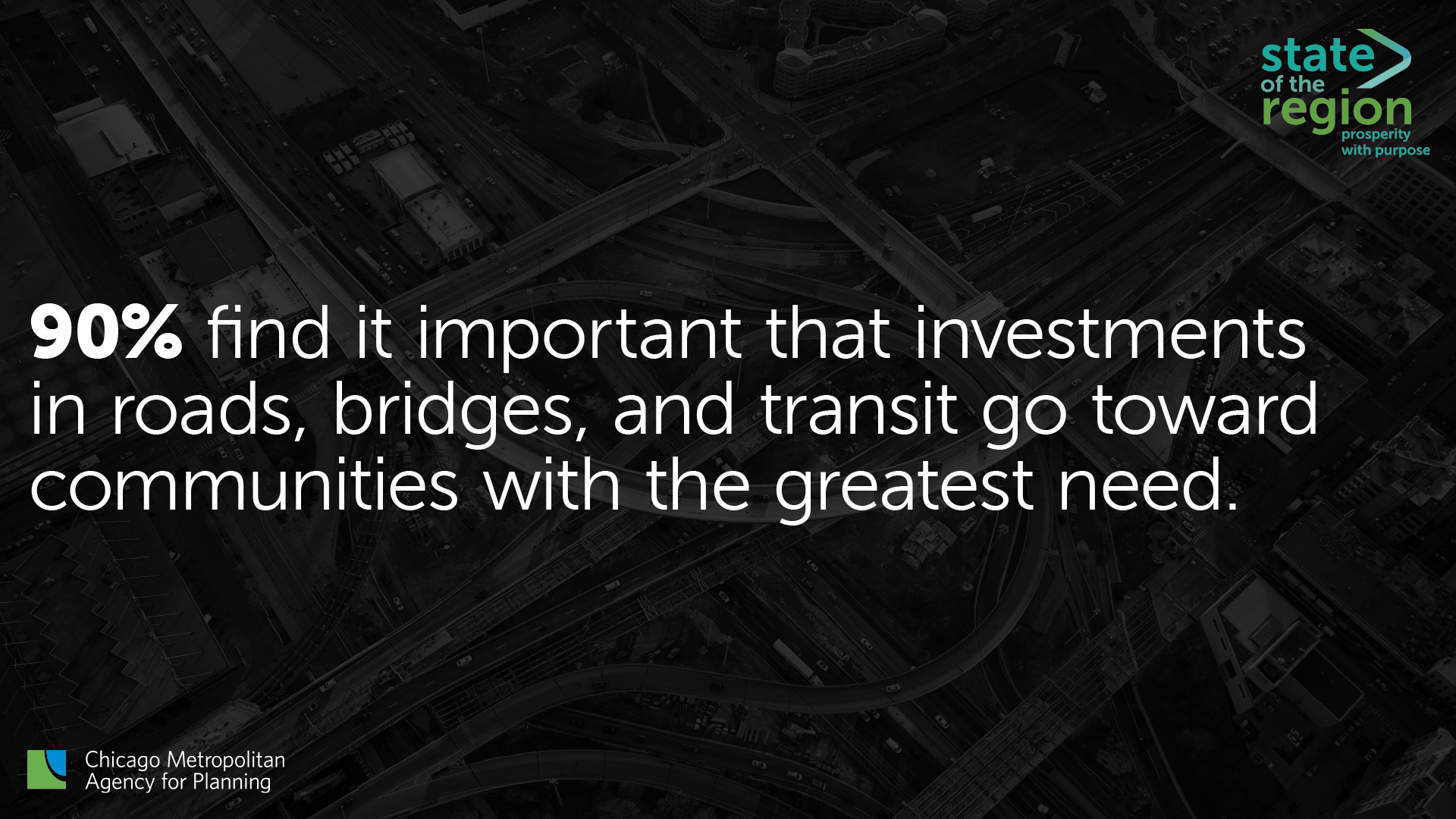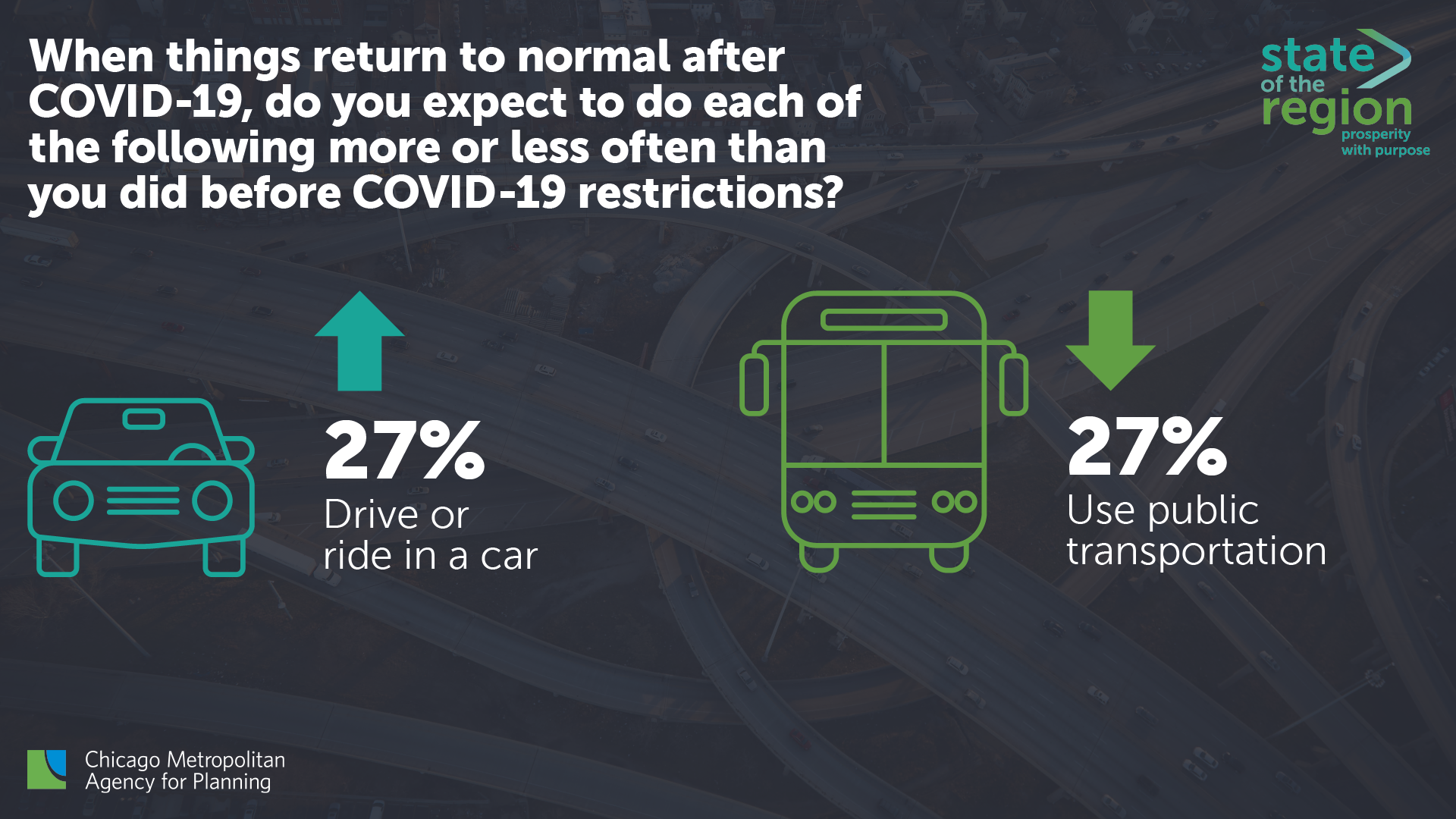CMAP Executive Director Erin Aleman provides a recap of the agency’s first-ever State of the Region event on October 7, 2021.
Reflecting on yesterday’s inaugural State of the Region, I am more confident than ever that we can achieve better things together when we rally around a shared purpose. This belief comes from my commitment to an inclusive and thriving region, the new vision for our work at the Chicago Metropolitan Agency for Planning (CMAP).
If you are among the 500-plus leaders who joined us for our event October 7, I hope you came away feeling the same resolve to better support the people of northeastern Illinois. We have incredible assets that have made us an economic hub of the Midwest and the transportation capital of the nation. But deep inequities come through loud and clear in the lived experience of people of color and other marginalized groups across our seven counties and 284 communities. Removing barriers for the most burdened is essential to a more inclusive, sustainable future.

CMAP is known for generating volumes of data and research. And this event was no exception. We unveiled findings from our recent public opinion survey of more than 2,000 residents, including their attitudes about critical quality-of-life issues and the successes and challenges they see across the region. I shared highlights during the State of the Region, including these key points:
Residents value their connection to community amenities. When asked about specific aspects of life, residents are most satisfied with their ability to get around the region. In fact, 3 out of 4 say they can get to the places they need to go on a regular basis.
But not everyone has access to these amenities. Residents living in historically disinvested and disconnected areas are less satisfied with their access to good jobs, open space, and air and water quality. People of color are twice as likely as white residents to say it’s hard for them to get to work.
Residents support equitable investments for roads, bridges, and transit. 90 percent think transportation dollars should go toward communities with the highest needs. This view is shared across different geographies, races, and income levels.
The pandemic has had a large impact on households. More than 1 in 5 residents have had difficulty paying for basics like food, groceries, and other essential expenses. Nearly 3 in 10 people lost income or hours since March 2020.
Many of these problems — identified in the region’s long-range plan — have worsened during the last 19 months. Inequities also have become more urgent during the pandemic. But with each challenge comes an opportunity to shift and reinvent how we’re serving the public.

One big opportunity is that residents want us to step up our efforts: In our survey, most respondents think more regional cooperation would benefit not only northeastern Illinois, but their communities and households. It truly is the job of government, along with civic organizations, philanthropy, and the private sector, to spread what’s working — and to change what’s not.
This work is not easy, and results don’t happen overnight. We need to refuel and recharge on a regular basis. We must recognize our successes more, as we did yesterday by recognizing innovative leaders and projects through our CMAP Regional Excellence Awards. We also have plenty of ideas and inspiration for the next 12 months, especially when I think of these four insights from Dr. Suzet McKinney’s keynote speech.
We are home to the third largest medical and life sciences economic engine in the nation. The Chicago region generates about $72 billion in economic output and supports almost 700,000 employees annually, according to World Business Chicago.
Thanks to its many first-class educational institutions and young workforce, Chicago has grown as a technology center. These young workers want to meet, network, brainstorm, and socialize. These environments stimulate collaboration — which is a key to success in life sciences, just as it is in tech.
The most important reason to support life sciences is because it can create vibrant economic hubs. Bruce Katz, a former Brookings Institution scholar, has done extensive research on this topic and found that life sciences clusters or innovation districts have the potential to spur productive, inclusive, and sustainable economic development.
Life sciences creates regular jobs for the regular workforce: 40 percent of life sciences jobs employ workers with high school or GED-level qualifications. This is Dr. McKinney’s favorite statistic and my new favorite data point. The industry has experienced 16% total job growth since April 2017 and far surpassed that of the technology sector.
Although it’s important to celebrate what we’ve achieved, so much more must be done to achieve our new vision. Once President Biden’s infrastructure bill passes, we will have the federal resources to make transformative investments in our transportation system and infrastructure. I feel so proud and fortunate to lead northeastern Illinois’ regional planning agency during this moment in time, and I know that together we will make concrete progress toward lasting prosperity.